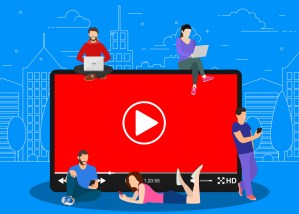You can ask your customers to explain their problem over the phone.
You can ask them to read the documentation that came with their product, or which you’ve posted on an online knowledge centre.
You can ask them to come into a physical location to deal with the repairs.
Or you can ask them to watch and learn.
While every customer service channel offers value, and some will always be preferred by some customers more than others, video stands out as one of the most effective ways to help people solve issues on their own.
This won’t surprise any of the countless people whose viewing habits have expanded beyond linear television to streaming services, or whose favourite programming is simply uploaded to YouTube.
There’s a reason social media platforms like TikTok have taken off, or why others, like Instagram, have made video-heavy Stories the first thing you see on your feed.
It’s human nature to respond to video content, especially when it’s well-produced and only runs long enough to give you exactly what its creator intended.
Although video content might represent a new medium for customer service teams, it can provide an asynchronous way to get across complex subject matter. In other words, customers can turn to it whenever they need it, rather than having to log on and watch at a specific date and time.
You might not be able to launch a library of customer service videos overnight, but that’s okay. Start with a single clip that addresses the biggest need from your customers, and evolve from there. If you’re already using a modern platform to manage customer service data, those needs won’t be difficult to find.
In terms of treatments, there are some of the most common formats that help augment or complement the work your customer service team has probably been doing up until now:
1. The ‘Getting Started’
When a customer gets your product in their hands, they usually can’t wait to start using it. Making them flip through a lengthy user manual just gets in the way of that process.
Video works well here because you can offer a friendly walk-through of the product’s components and the basic steps to begin accessing the most commonly-used functions.
2. The ‘How-To’
It may be obvious to the team that developed your products and services what’s involved in achieving specific outcomes. There’s a long history among service teams, however, where agents have had to patiently explain the obvious to frustrated customers.
If your product can be used to accomplish more than one task, for example, a how-to video would streamline the process of figuring out how to tackle the most complicated ones. You can use animation or demonstrations that save people hours of flying blindly.
In some how-to videos you’ll also point out the most common mistakes customers might make, which can help mitigate the risk of a product getting damaged.
3. The “Talking FAQ”
Companies that have been operating for any length of time quickly begin to see some trends in terms of areas where customers typically get confused. This includes what’s included with a product when they make a purchase, how it can (or can’t) connect to other products and various terms and conditions.
This is where many frequently asked questions (FAQ) pages on company web sites are born. The trouble is that these pages sometimes get buried as a web site continues to be developed, or people just don’t take the time to read them.
A video FAQ might seem redundant, but it reflects the fact that you’re offering a choice of how to consume important self-service content. Meeting customers where they are — including via video — is always a good idea.
4. The ‘Resource Map’
Just as they shouldn’t have to wait on hold to talk to a service agent, customers shouldn’t have to invest their time looking up email addresses or sections of your site where they can find additional support.
Channel your inner tour guide and offer a complete on-camera overview of your omnichannel service strategy. This could include how to get support via social media, text, self-service portals, chatbot options or dedicated support e-mail addresses.
5. The ‘Policy In A Nutshell’
How can people return a product they don’t like or shouldn’t have bought? Can they get a full refund, or merely an exchange for credit? How long does the company support a particular product, and why?
Some of these might be covered off in your FAQ videos, but depending on the nature and context of the policy, you might want to have a playlist of more focused clips, and post them where customers are most likely to be looking for an explanation. This saves service agents from delivering the same litany over and over again.
6. The “You Might Also Need . . .”
Many companies offer accessories or complementary items that could help customers maximize their use of the product they bought. They just might not have realized it when they made their initial purchase.
Just as the best service teams engage in cross-selling and upselling, your customer service videos can drive more revenue by pointing people to additional products that could enhance their experience.
Whether you produce a video based on one of these formats or all of them, don’t stop with this list. Continue to listen to your customers at every stage of their journey. Think of the videos as another way in which you’re responding to the ongoing conversation you have with them. The result won’t just be a lot of views, but a marked rise in customer satisfaction.

























